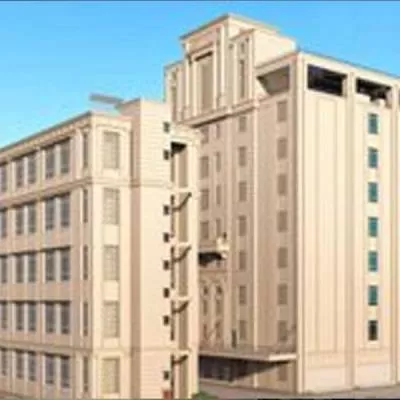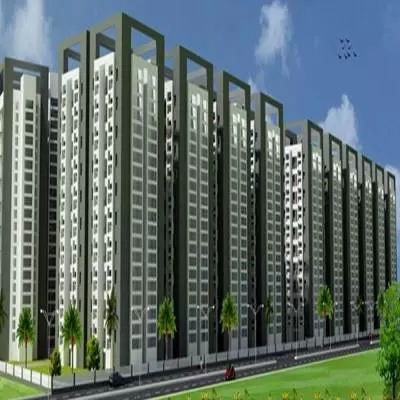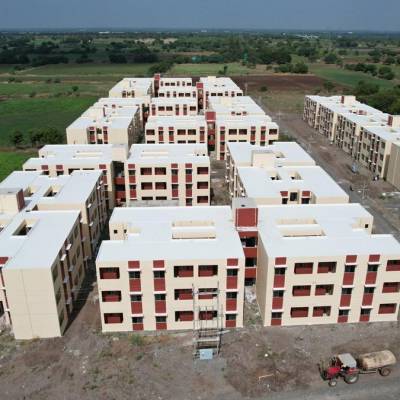- Home
- Real Estate
- Formulae to Build Better
Formulae to Build Better
Read full article
CW Gold Benefits
- Weekly Industry Updates
- Industry Feature Stories
- Premium Newsletter Access
- Building Material Prices (weekly) + trends/analysis
- Best Stories from our sister publications - Indian Cement Review, Equipment India, Infrastructure Today
- Sector focused Research Reports
- Sector Wise Updates (infrastructure, cement, equipment & construction) + trend analysis
- Exclusive text & video interviews
- Digital Delivery
- Financial Data for publically listed companies + Analysis
- Preconceptual Projects in the pipeline PAN India
Chemicals are playing an ever-expanding role in construction, helping to create more efficient roofs, stronger floors, and greener, more affordable buildings.The construction chemical market in India has been growing at the unprecedented rate of 14-16 per cent YoY over the past five years, according to Basab Saha, Business Head, Dow Construction Chemicals, South Asia.“We are getting a greater number of large volume orders for bigger projects,” affirms Sanjay Bahadur, Group CEO, Construction Chemical Business, Pidilite Industries.Growth in demand for construction chemicals has largely been led by the boom in the infrastructure sector as well as affordable housing, says Saha.“Demand for waterproofing and admixtures is growing on the back of infrastructure expansion, airports and national highway projects,” says Preetham Yeada, Associate Vice President, Commercial & Corporate Strategy, MYK Arment.In general, developers are becoming aware of the need for a systematic approach to waterproofing in their structures or buildings and are adopting a system approach vis-à-vis a product approach, says Yeada. “RERA has played a role in boosting demand for chemicals too, as developers realise that by spending on construction chemicals they can avoid spending on the maintenance of their projects in future.”“Urbanisation, the focus on environmental regulations, energy utilisation, increasing need for fast-setting construction chemicals and solutions that enhance the long-term durability of structures are driving growth in the construction chemicals industry,” says Dr Vijay Raman, Business Director, Construction Chemicals, BASF South Asia.“Construction chemicals are in great demand,” affirms Chetan Raikar, Chairman & Managing Director, Structwel Designers & Consultants, while offering an interesting contrarian view on their absolute essentiality. “It is important to understand that chemicals are only as good as the substrate. If you build well, without hurrying, you will need chemicals only sparingly.”Potential driversIn future, Saha expects changing climatic conditions, emerging regulatory standards (like green certification programmes) and continually increasing awareness and demand for quality construction among end-users to spur the uptake of technologies.Dr Raman sees multiple opportunities with the current government’s focus on developing the manufacturing sector and infrastructure and, of late, traction in the realty sector, where housing inventories finally appear to be declining, albeit at a slow rate.Other than some hesitation, possibly owing to the election, Yeada expects the market to do well. It is challenging to assess the potential for construction chemicals but a thumb rule correlates cement output with the current demand for construction chemicals. On this basis, he reckons that only about 5 per cent of the potential has been tapped in India and the same may be attributed to lack of awareness, lack of skill and, to some extent, non-adherence to specifications and design. Of course, the usage is much higher in developed countries.Basements are likely to present a big opportunity in value terms for the construction chemicals industry, says Yeada. Essentially, better space management and the need to provide parking space are necessitating that buildings go underground, even in smaller cities.BASF South Asia’s newer products include the MasterSeal range of engineered waterproofing solutions for basements and the protection and waterproofing of water-retaining structures like STPs and ETPs, and speciality admixtures to protect concrete from active corrosion.Podiums are another area with potential for high-quality construction chemicals as they are subjected to lot of dynamic loads and movements that need proper protection, says Yeada. Third, he sees huge potential in providing waterproofing chemicals for tunnels.Popular productsThe construction chemicals market spans different chemistries associated with different performance levels and price points. Within this, Bahadur says demand is gradually shifting towards high quality, better and longer performing waterproofing technologies. “Users who can afford the best technologies have gravitated from using polymer-based systems to cementitious to elastomeric to polyurethane to polyurethane coatings.”Pidilite Industries offers the Super Seal range of coatings, which are high-quality, two-component systems.“In the area of waterproofing for traditional wet areas, we are seeing increasing demand for single-component, acrylic-based technologies as opposed to the conventional two-component polymer or latex-based solutions,” says Yeada.Saha is of the opinion that although innovation is thriving, the adaptation of new technologies in the Indian market is still relatively slow. “Customers are primarily looking for value-for-money solutions that show clear benefits and make for sustainable, green buildings,” he says. Hence, “a key focus of Dow Construction Chemicals in India has been to launch water-based, low-VOC solutions that add to the sustainability quotient of a building, enabling projects to comply with evolving green building standards.”Two users express their preference:“We prefer membrane-type waterproofing for basements and podiums for its ease of use and high performance,” says Dr Vinod Jain, CEO, Vintech Consultants. “Membrane waterproofing is more expensive than crystalline waterproofing but offers better protection to the building envelope. Polyurethane-based waterproofing needs to be made more readily available.”“We use brick bet and polyacrylic chemical coating waterproofing depending on the project,” says Sagar Saxena, Project Head, Spectrum Metro.Roof coatingsGlobally, roofing accounts for over 25 per cent of the waterproofing chemicals market by revenue, says Rajesh Goyal, Managing Director, RG Group, and Vice President, CREDAI NCR.Goyal points out that, globally, bitumen is the largest product segment, accounting for over 40 per cent of the market by revenue, because it is reasonably priced. Bitumen is mostly applied as roll roofing because of its high viscosity and stickiness. In India, Saha reckons that roofing accounts for around 12 per cent of the total demand for construction chemicals. Within the roof coatings segment, “demand for higher performing coatings is growing the fastest, as customers move towards products that deliver greater value and have a longer service lifetime,” he says.In the long run, Saha expects demand to increase for reflective roof coatings that deliver safety and durability, while also helping to reduce energy bills and the need for repairs and reinforcements. “The need to conserve energy will become more pronounced as climatic conditions become harsher and ensuring human comfort necessitates more air-conditioning.”Thermoplastic polyolefin is becoming more popular for its heat-reflective properties and being an energy-efficient roofing system, says Saxena.Dow Construction Chemicals provided reflective roof coatings to a large food, beverage and hospitality conglomerate to run an integrated multi-city trial. The products helped achieve a significant (4-5°) difference in indoor and outdoor temperature, thus improving comfort and productivity while reducing overall energy usage. The PRIMAL roofing solution is one of many products and technologies from Dow Construction Chemicals that are designed and customised specifically for India. Flooring solutionsDow Construction Chemicals offers ECOGROUND flooring solutions for sports projects and WALOCEL grades of gypsum-based renders for self-levelling cementitious flooring. These are being use by construction chemicals and dry-mix mortar manufacturers.BASF offers industrial flooring and machine grout solutions as well as flooring systems from the Master Builders Solutions portfolio. Goyal sees good scope for flooring compounds for resistance to chemical attacks, abrasion, moisture, fire, heat and sound. However, while he notes that the industrial flooring sector has been growing at over 15 per cent recently, he says concerns about the health hazards of chemical-based floorings expressed in the international market have restricted the RG Group’s use of those products in residential units.“Demand for flooring products is on the rise in India owing to safety and hygiene requirements and the increasing focus on energy-efficiency,” says Saxena. The trend is to use epoxy and resin flooring compounds and, of late, polyurethane concrete solutions in areas that require heat and chemical resistance. In residential properties, the use of chemical-based flooring compounds is limited to areas with higher footfalls during the day.“Flooring compounds have a bright future in the industrial sector, especially in the food packaging and pharmaceutical sectors where one needs abrasion-resistant, non-dust generating floors,” says Raikar. In the residential sector, he sees scope for flooring compounds only for creating decorative flooring in areas such as hardscapes (in the garden) or pool sides, not so much for regular floors that are required to be impact-resistant.Affordable housingDr Raman sees construction chemicals playing an important role in the expansion of the affordable housing segment, by reducing the cost of construction. In India, he says, “as it is, inordinately long project completion periods significantly drive up the cost of labour and energy and overall project cost.”“Affordable housing developers are budgetting for the use of construction chemicals, which is a good sign,” says Yeada. “Many affordable housing developers are fairly experienced players, and so they are aware of good construction practices.”In an affordable housing project for the Karnataka Slum Clearance Board in Bengaluru, BASF’s Smart Dynamic Concrete (SDC), containing admixtures that increase flowability and ease of pumping of concrete at site, enabled the construction of a building of three floors in 20 days, vis-à-vis a minimum of 35 days when using traditional concrete. Essentially, SDC increased the speed of placing concrete by up to 40 per cent, thus speeding up the construction process. A total of 1,200 low cost flats were built in 18 months, as against the 30-36 months projection time. By lowering the cementitious content in concrete, SDC also helps reduce construction costs. Once in place, the concrete self-compacts and maintains durability.SDC has also been used in Sobha’s Sobha Indraprastha residential project in Bengaluru and Pashmina Developers’ Pashmina Waterfront residential project in Bengaluru.“It is imperative that we don’t build vertical slums in the name of affordable housing,” cautions Bahadur, alluding to the need to select an appropriate system for each project. For the best results, he says it is important to protect the general areas of application failure such as corners, and areas around pipes and expansion joints. “In general, the affordable housing boom has increased the uptake of performance-enhancing construction chemicals,” concludes Saha. However, he notes that developers can still do a lot more in terms of applying the latest construction tech solutions. “Affordable housing has the potential to absorb a variety of hybrid solutions such as acrylics, silicones, polyurethane and others, which can be offered in segments like precast, lightweight concrete and more.”- CHARU BAHRI
























